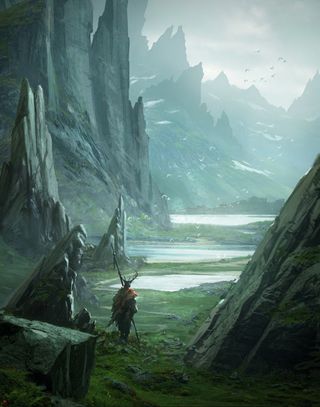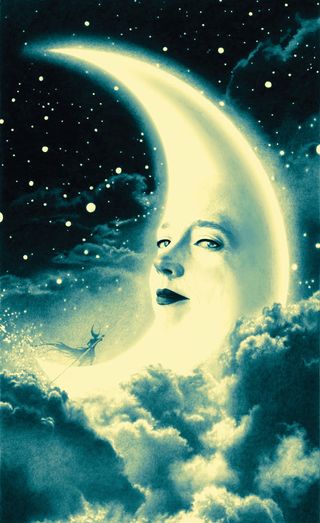When is copying another artist legitimate?
Pro artists debate the use of third-party imagery that goes beyond basic reference.
Age-old techniques
Raphael Lacoste also empathises with Craig and says the techniques he employed are nothing new. "Staring at a blank page is stressful. It's naïve to imagine that even traditional masters didn't use any references to start. Masters from the 17th and 18th centuries used the camera obscura to copy lines of composition in landscapes.
"Some artists, with maybe less experience, imagine that using references is cheating – I often hear that with my students," he continues. "But it's not the case. It's no different to the classical master using engravings from anonymous artists – or even known masters – as inspiration.”
Some artists imagine that using references is cheating. But it's not the case
The art director and illustrator, who's worked extensively for video game giants Ubisoft and Electronic Arts, has rough guidelines when using other artists' imagery: "We can't use a landscape or cityscape composed and designed by a concept artist without crediting them. This is stealing art. If you use the exact composition, atmosphere, colour and contrast of a photo, and it makes up more than 50 per cent of your final artwork, you must credit the photographer."

Add something to the stew
However, John Picacio doesn't agree. "That postmodern thing of, 'I'm just sampling other people's stuff – I’m just gonna put these together…' Sorry. Maybe I'm old fashioned. But that doesn't work for me."
John has won virtually every art award going, but David McKean heavily influenced his work as a young artist – so much so that he finds it difficult to look back over some of his earlier stuff. It gives him "the ick"”. Yet he maintains there's a difference between that – essentially homage – and lifting wholesale from other artists' creations.

"Even Giger or Moebius – visionary artists who changed the way people look at certain modes of art and opened a doorway to things not previously seen – you can still see roots in their work. Those who came before them. It's there. It can't be helped and all great artists know you just have to acknowledge these things."
John refers to a quote by one of his collaborators, sci-fi writer Michael Moorcock. He imagines a huge stew to which the best creative people throughout history add. "Michael says that it's fine to take away from the stew as long as you're also adding something new to it.
"Giger and Moebius and all great artists," John concludes, "they're always giving so much more than they're taking out of the great creative pot of stew."
Words: Gary Evans
This article originally appeared in ImagineFX magazine issue 114.
Like this? Read these...
- Godzilla artist reveals why he quit art school
- How to become an artist without the help of traditional art school
- Great examples of doodle art

Thank you for reading 5 articles this month* Join now for unlimited access
Enjoy your first month for just £1 / $1 / €1
*Read 5 free articles per month without a subscription

Join now for unlimited access
Try first month for just £1 / $1 / €1
Get the Creative Bloq Newsletter
Daily design news, reviews, how-tos and more, as picked by the editors.
The Creative Bloq team is made up of a group of design fans, and has changed and evolved since Creative Bloq began back in 2012. The current website team consists of eight full-time members of staff: Editor Georgia Coggan, Deputy Editor Rosie Hilder, Ecommerce Editor Beren Neale, Senior News Editor Daniel Piper, Editor, Digital Art and 3D Ian Dean, Tech Reviews Editor Erlingur Einarsson, Ecommerce Writer Beth Nicholls and Staff Writer Natalie Fear, as well as a roster of freelancers from around the world. The ImagineFX magazine team also pitch in, ensuring that content from leading digital art publication ImagineFX is represented on Creative Bloq.
